Introduction: Company Overview
- Operates in the retail industry;
- Has been in business since 1895;
- Located in Dallas, TX;
- Revenue (2014): $ 300 mln. (Philpott, 2014);
- Offers employee benefits;
- May need to reconsider its current HR strategy because of the introduction of a training program.
AAFES has been in the retail industry for an impressive amount of time. The firm has an impressive revenue streak, yet the entrance into the global economy may require an update of its staff’s skills and competencies.
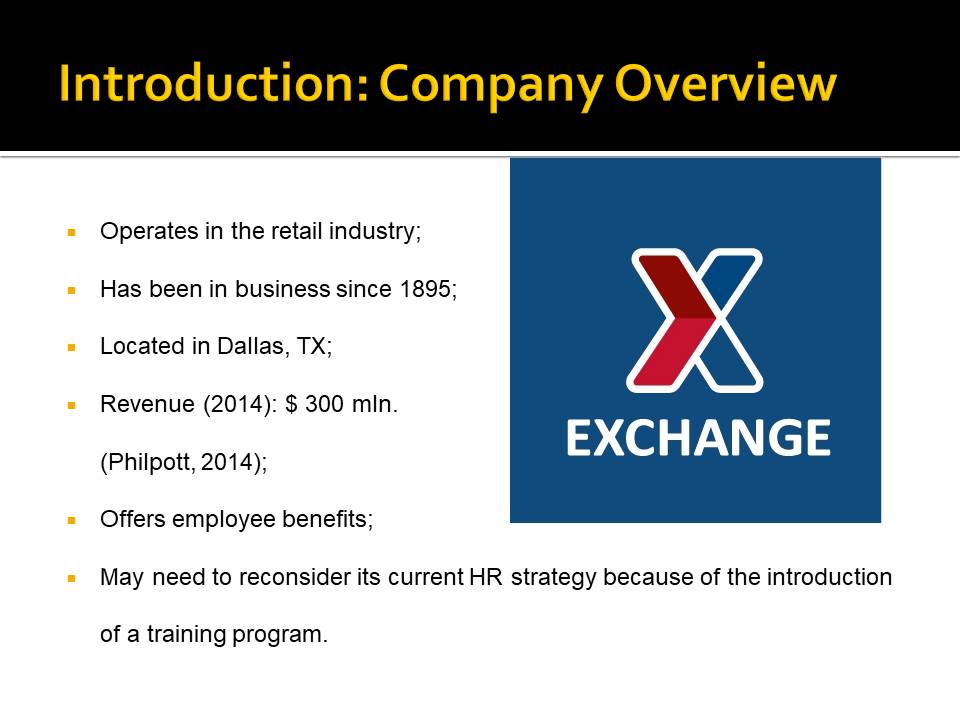
Cooperation and Influence
Company Characteristics
- A strong leader figure shaping the staff’s OB patterns;
- Reinforcement of the significance of CSR;
- High SSR compared to Wal-Mart, K-Mart, and Target (Employee satisfaction, 2016).
The diagram points to the fact that AAFES’s current approach toward facilitating staff satisfaction is quite positive, yet it needs improvement to beat Target.
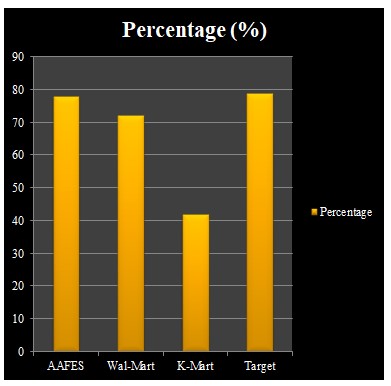
AAFES has solid premises for a design of a training program. The firm shapes its employees’ organizational behavior patterns with the help of an influential role model that the company leader and managers represent. As a result, the staff acquires the basic principles of Corporate Social Responsibility.

HRM Approach and Staff Efficacy
Involvement
- Staff members are motivated by a strong leader figure (Henderson, 2012);
- Mutual help and information sharing cause engagement;
- Similar trends are observed among competitors.
Satisfaction
- Staff satisfaction rates (SSR) are high at present;
- Target, Wal-Mart, and K-Mart display the same tendency;
- However, SSR may drop with the introduction of a compulsory skill-training program.
Although AAFES has a strong approach to staff involvement based on information sharing and mutual help, the introduction of a training program may reduce staff engagement rates. The key competitors (Wal-Mart, K-Mart, and Target) do not ache this problem currently.

Management Attitudes, Values, and Actions
- Policies aimed at the promotion of fairness and equity (Ziobro, 2015);
- A nuanced and profound approach (Mitchell, 2015);
- Lack of development in terms of leave policies (especially parental leave);
- Positive reinforcement strategy aimed at staff’s efforts recognition similar to those adopted by the competitors;
- High salaries and advanced technology;
- Significant production increase.
The diagram allows evaluating the current position of AAFES in the target market compared to those of its key competitors.
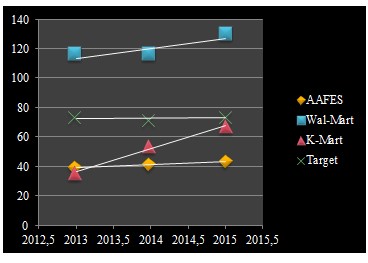
The values of AAFES can be deemed as positive. The emphasis on cooperation, the active promotion of the latest technological advances, and the use of a positive reinforcement strategy helps the company gain a competitive advantage to coexist with Target, Wal-Mart, and K-Mart.
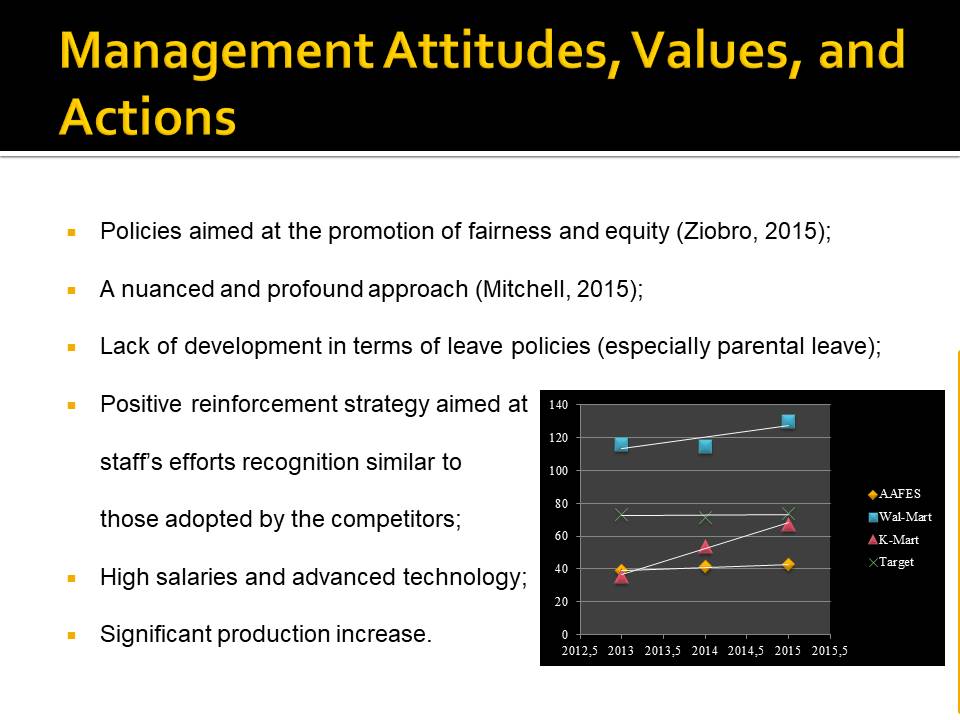
Solutions for a Possible Drop in Staff Engagement
- Self-promotion options as the primary focus;
- Stressing the options for the further self-directed learning and skills acquisition (Transitioning form, 2012);
- Adoption of the Six Sigma approach as the key approach allowing the promotion of improvement;
- Active use of the DMAIC framework (Pyzdek & Keller, 2014);
- Redesign of the current compensation package (The U.S. Congress, 2016).
However, the integration of training courses may cause a drop in employees’ engagement as the staff may be unwilling to undergo a performance enhancement program. Therefore, the importance thereof for the further self-promotion and increased value of the staff’s assets needs to be emphasized.
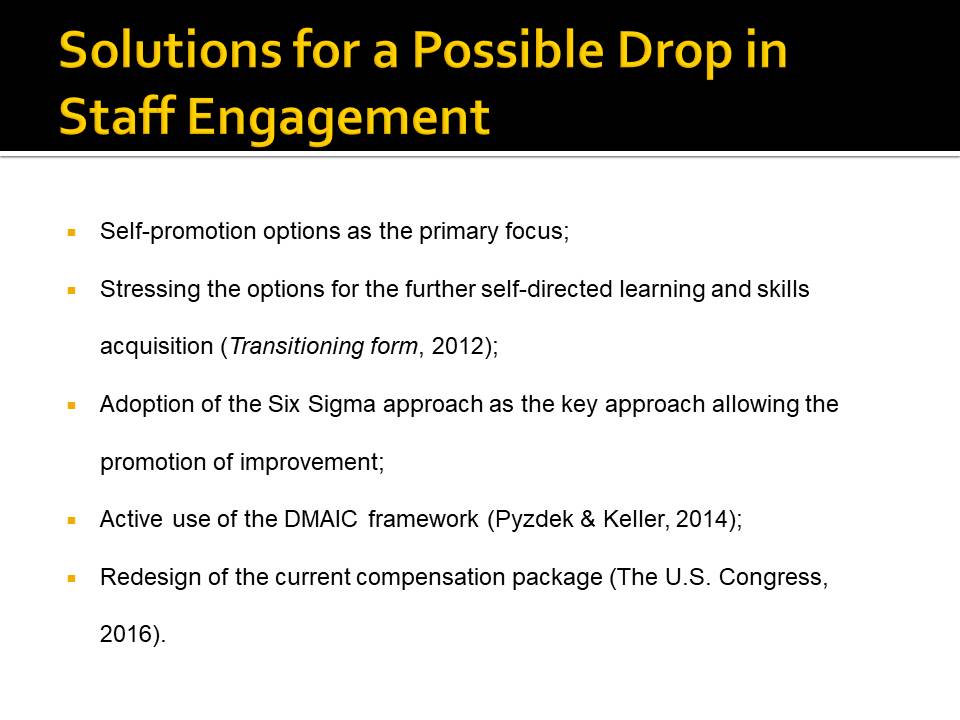
Changes to Be Made
- Redesign of the company’s values toward the acknowledgement of the needs of every stakeholder involved;
- Shift toward a transformational leadership approach as the means of changing the staff’s performance;
- Reinforcement of the CSR principles as the primary tool for maintaining positive OB rates;
- Focusing on the necessity to introduce financial incentives and incorporate the policy of non-monetary rewards (i.e., public appraisals).
It is essential to promote changes on all levels of company’s performance. The values of AAFES will have to be altered to promote the significance of all stakeholders involved, including the employees. CSR should be used along with incentives and appraisals.
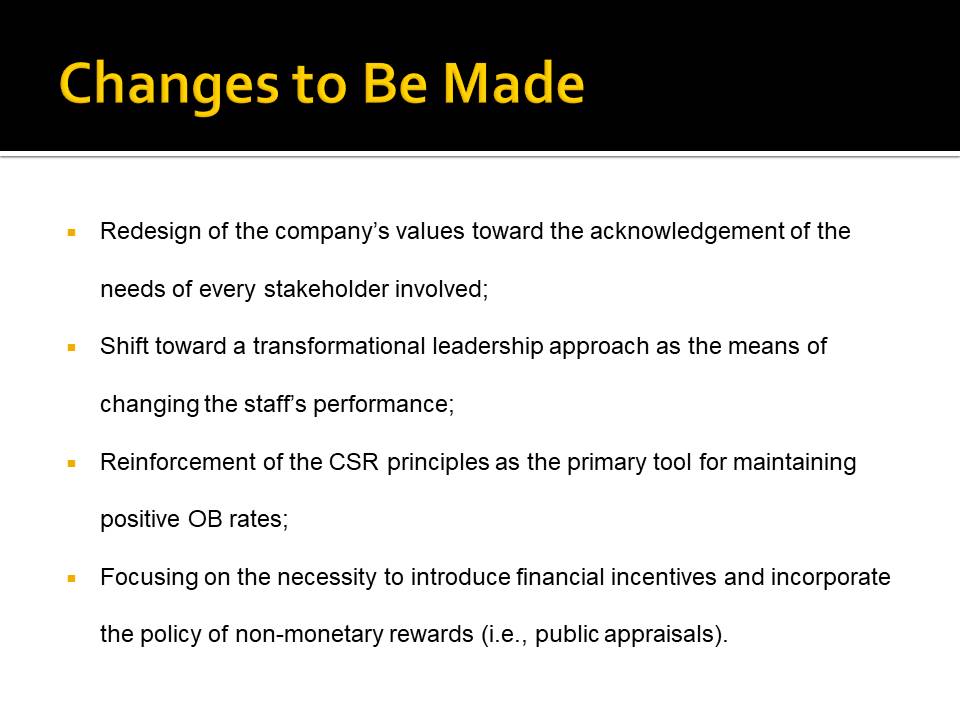
Solutions: Compensation Package
- Choice of a PPO plan due to better flexibility;
- Following the Bipartisan Budget Act of 2015 (The U.S. Congress, 2016);
- Complying with the Special Leave Policy principles;
- Making sure that each staff member is provided with a 24-day annual vacation;
- Creating options for a maternity (12 months) or a parental leave;
- Adding an extra hour to the staff’s time –off every week.
The Compensation Package should also be altered so that the needs of diverse staff members should be taken into account. Specifically, the significance of maternity (parental) leave, a 24-day annual vacation, and the provision of a weekly time-off with opportunities for its increase need to be mentioned.
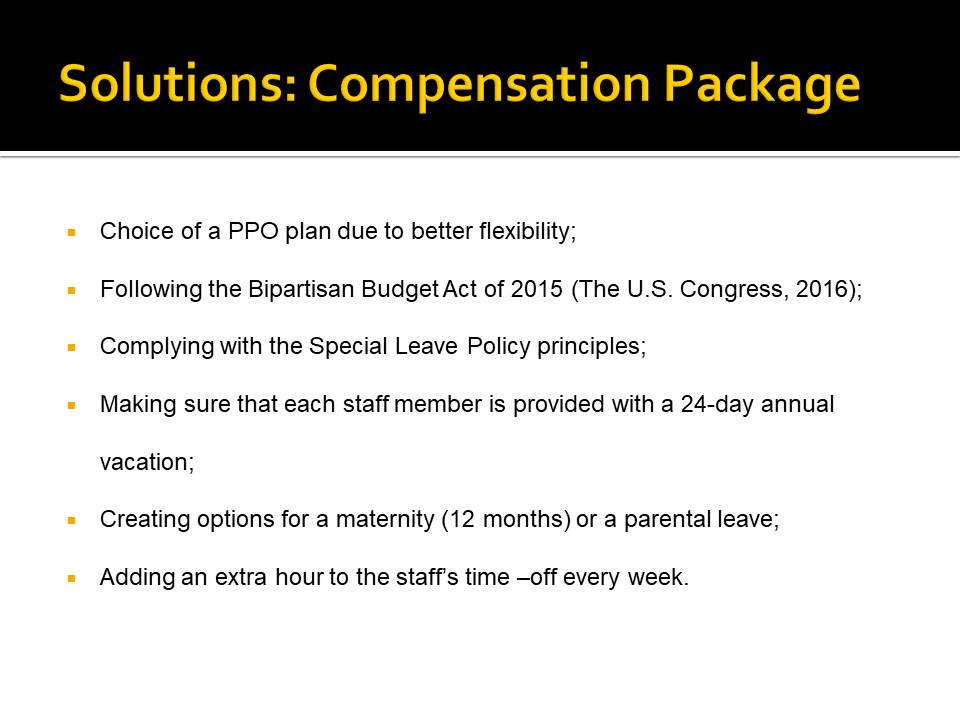
Reference List
Employee satisfaction. (2016). Web.
Henderson, M. (2012). A day in the life of an AAFES Employee. Web.
Mitchell, D. (2015). Wal-Mart’s problems go beyond underpaid workers. Time.
Philpott, T. (2014). AAFES wants to let vets shop online.
Pyzdek, T., & Keller, P. (2014). The Six Sigma handbook (4th ed.). New York, NY: McGaw-Hill.
The U.S. Congress. (2016). H.R.1314 – Bipartisan Budget Act of 2015.
Transitioning form. (2012).
Ziobro, P. (2015). Target and Wal-Mart’s problem: Shoppers. The Wall Street Journal.